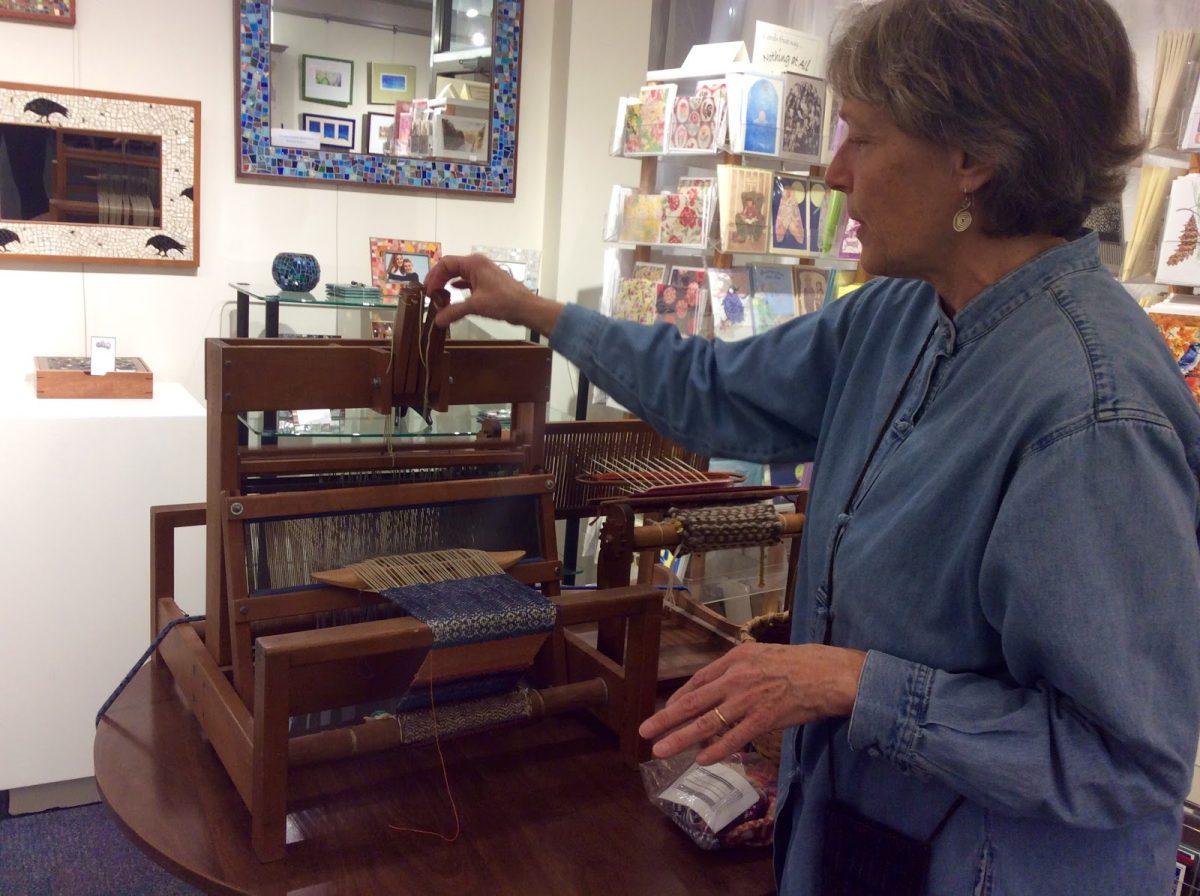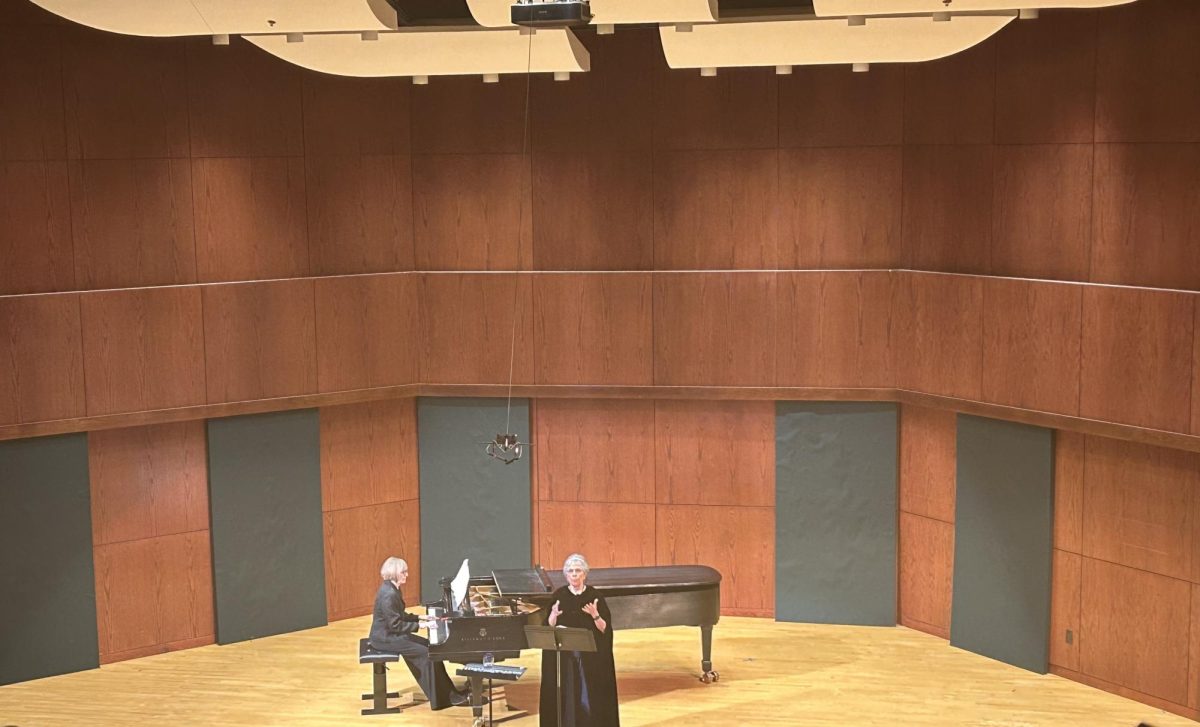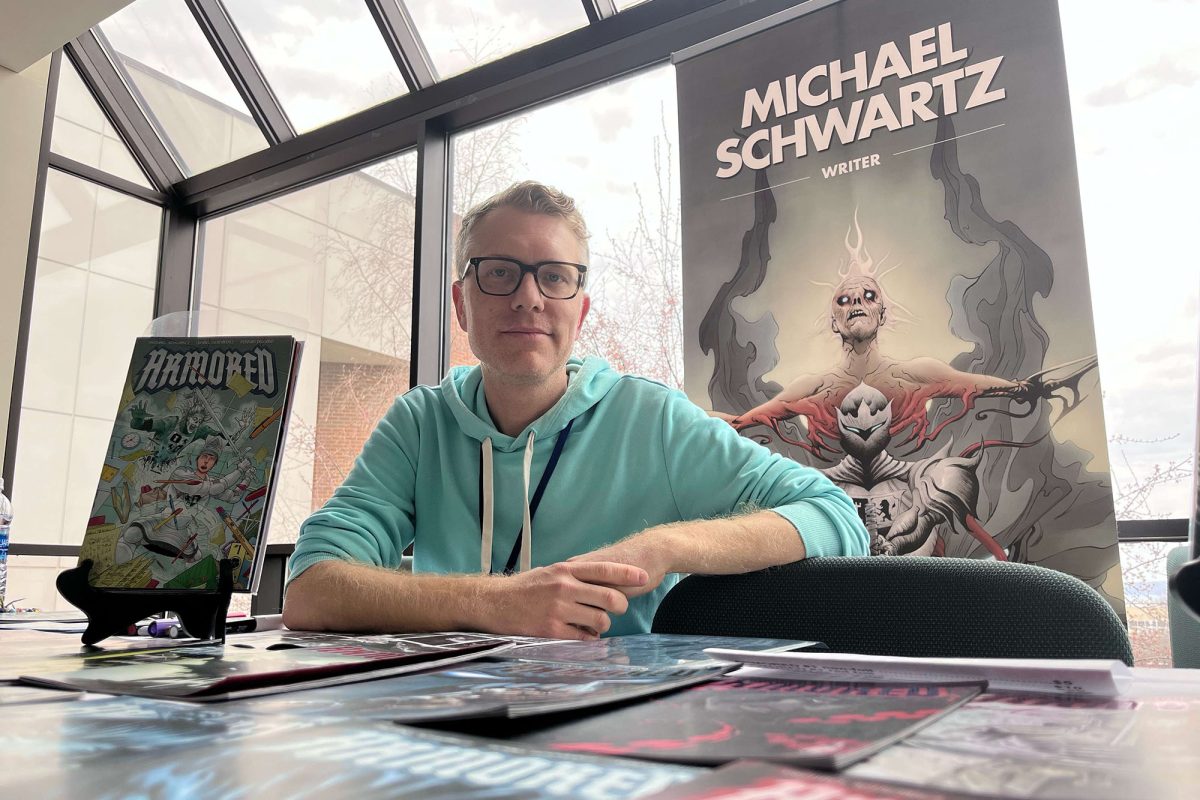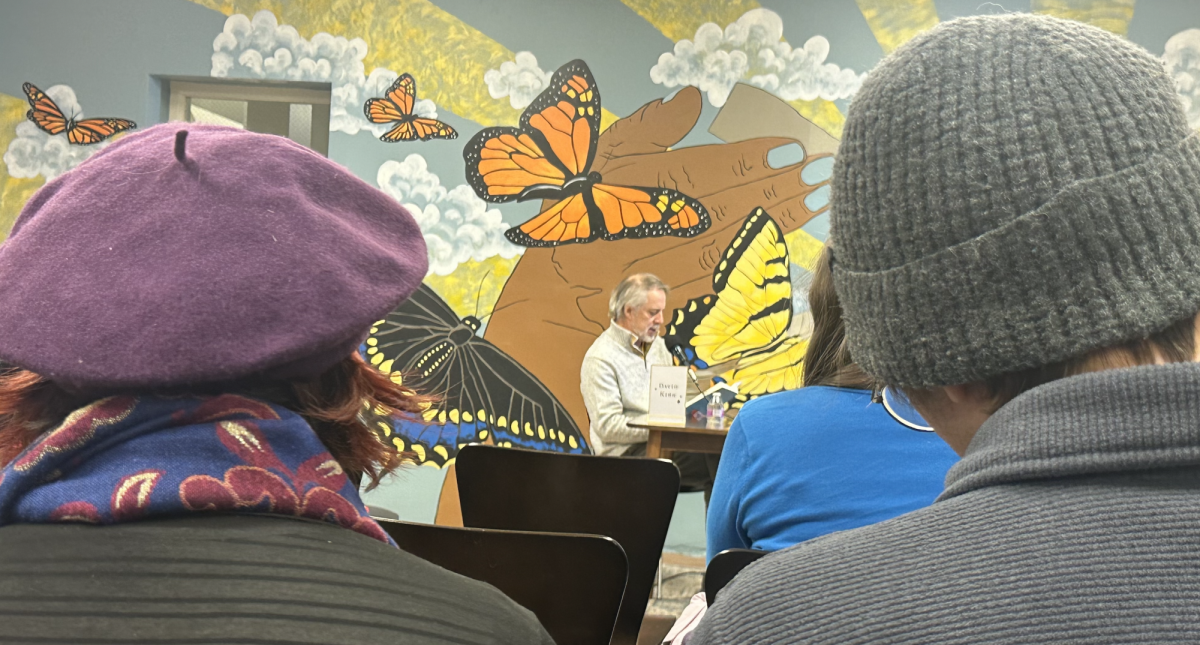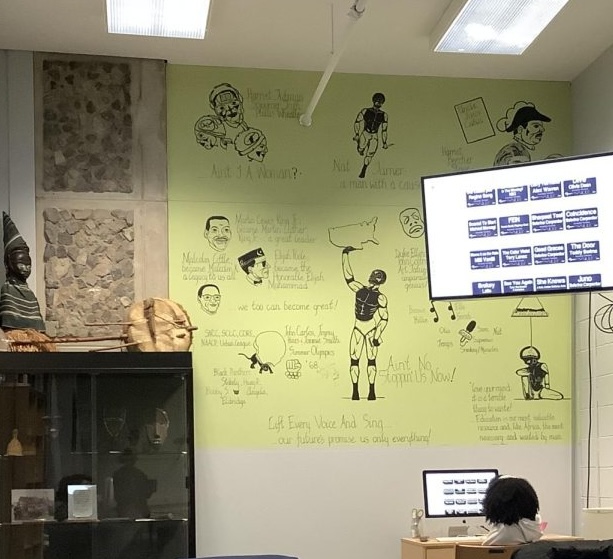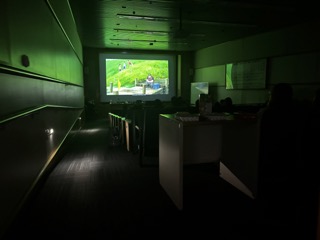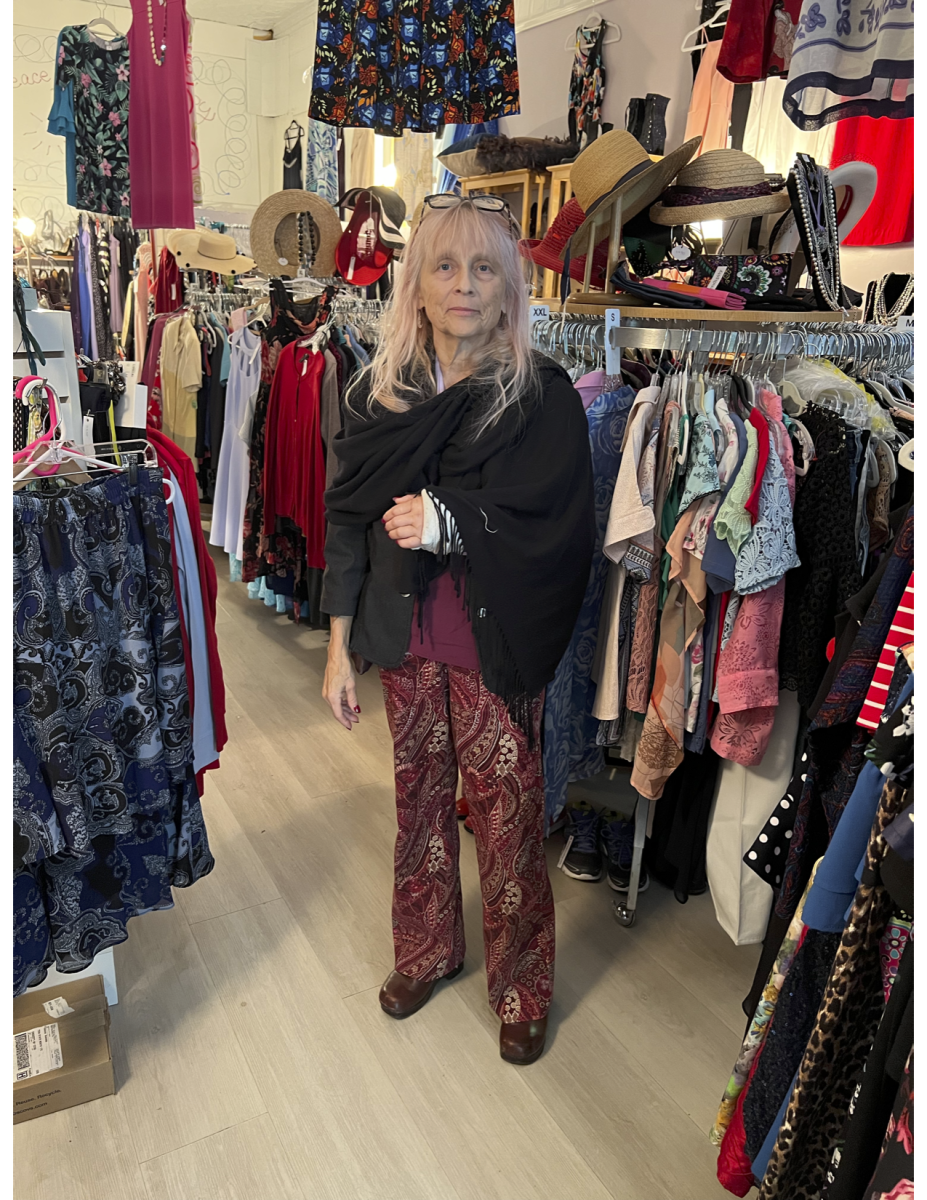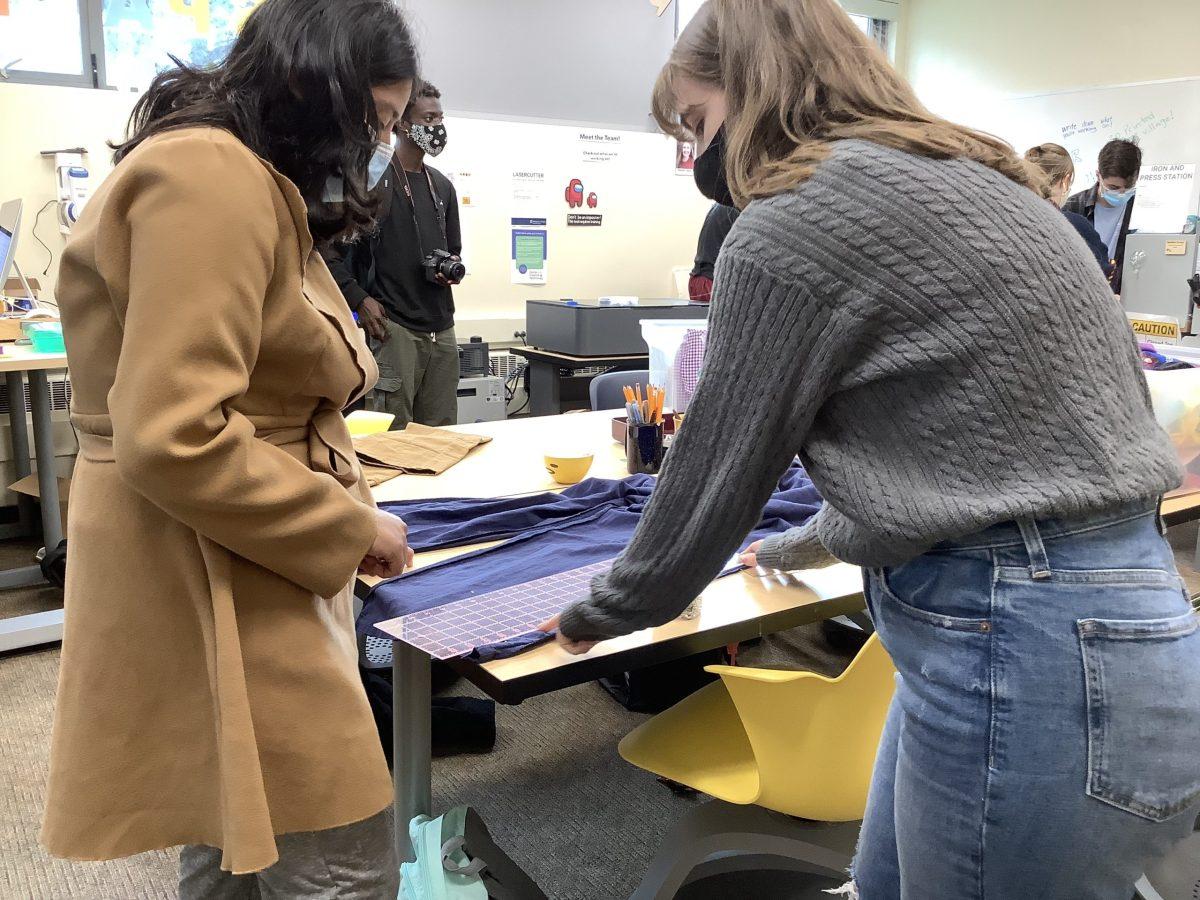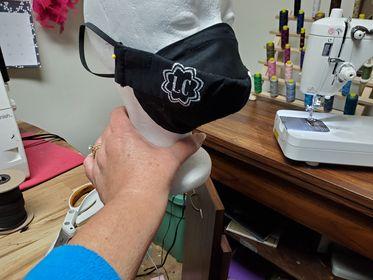Colorful threads hang off of four different looms near the entrance of Handwork, a well-lit craft store in Ithaca. The clicking of the wooden machines can be heard throughout the store.
June Szabo is leaned over a small floor loom, with her feet on the treadles, which look like large, wooden piano pedals. The treadles move the harnesses as she slides spools of thread called the shuttle that contains the weft — the crosswise threads — back and forth to create a pattern and ultimately, a scarf, rug or small bag.
Szabo performed a weaving demonstration on Nov. 6 at Handwork, a cooperative art and craft store located across the street from the State Theatre on The Commons. She is an experienced artist who teaches weaving classes and has been producing weaved goods her entire life.
“I started weaving about 38 years ago,” Szabo said. “I started with rugs because I had a lot of wood floors in my house and I wanted to cover them with something in not carpet, so I learned how to make rugs.”
The weaving process is lengthy, especially during setup. The seven or eight different looms Szabo works on in her 18-by-20 foot studio are significantly larger than the ones she has on display in Handwork.
“Setting up the loom takes longer than actually weaving does,” Szabo said. “I spend probably a day on my big looms just setting it up. And I try to wind off for about eight scarves. And then it takes probably two hours to weave a scarf.”
Weaving with thread weavings aren’t all Szabo creates. The local artist weaves with copper wire and creates sculptures out of wood and other materials. She took a break from sculpting when she had children and focused on what she called “functional art” and returned to sculpting when her children grew up. Inside Handwork, you can find several of Szabo’s wooden sculptures displayed in the third room window, which are visible from the outside.
Handwork exclusively exhibits and sells handmade work created by artists who are members of the cooperative. In turn, artists work at Handwork 16 hours per month, doing sales and tidying up the store.
Stacey Esslinger, a potter from Corning, New York, stands behind the cash register on the day Szabo demonstrates her weaving. She explains that artists must apply to be considered to have their artwork sold at Handwork.
“They come in and fill out an application and we decide if their work is up to our standard and fit with the rest of everyone else’s work and if we have space for it because the space is limited,” Esslinger said. “Then we vote and then they sometimes they are accepted and they become a member. There’s a trial period and eventually you become a full member.”
When Szabo isn’t weaving or creating artwork, she is a part-time teacher at the Tompkins Seneca Tioga Board of Cooperative Educational Services and helps older adults get their high school diplomas.
But weaving is still Szabo’s main passion. There aren’t very many weavers in the Ithaca area and because of this, Szabo took matters into her own hands. She and her students started the Finger Lakes Fiber Guild, which meets approximately once a month.
“We bring in our work so we can talk about our problems and our successes … We do a lot of different things,” Szabo said. “Anything to do with fiber whether it’s the technique, or the fiber, or anything, we’re really interested in. It’s a lot of fun. Even though I didn’t have a community of weavers, now I’ve kind of grown one.”
The Ithaca community is home to a number of unique artists who contribute to the diversity of artwork seen in Handwork and other locations throughout the area. Szabo believes the natural beauty of the Finger Lakes region is related to the kind of artwork that artists produce.
“I think there’s an amazing artist community in the Ithaca area that do a tremendous number of different kinds of things,” Szabo said. “I don’t know why there are so many people here, but my theory is it’s the landscape. It’s the beauty that we’re surrounded with. It’s the way that you feel in this community, in the surrounding areas. I think it draws creative, artistic people. That’s my theory on that.”

